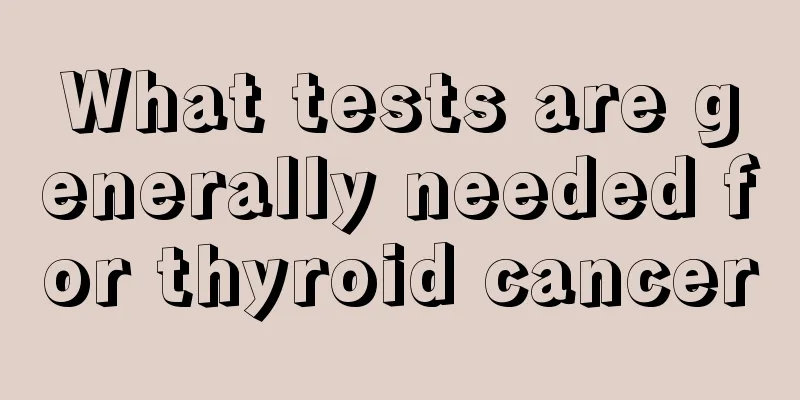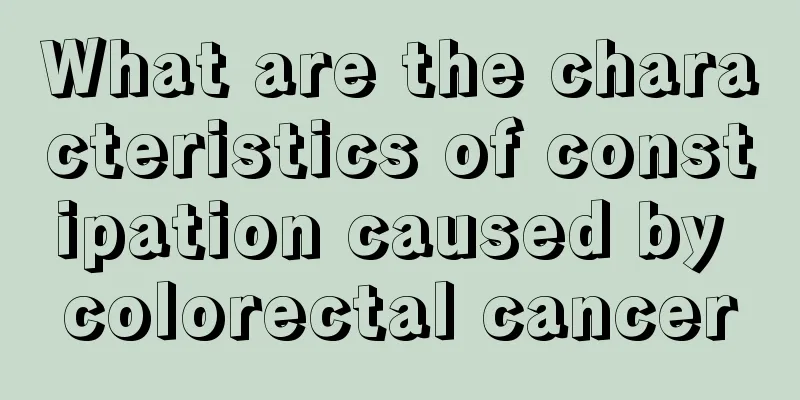What tests are generally needed for thyroid cancer

|
What kind of examinations are generally needed for thyroid cancer? Regardless of the treatment of any disease, an examination is required first to help understand the development of the disease and to confirm the type of disease. Thyroid cancer is a malignant tumor disease. Because the surface symptoms are not obvious, examination is the only basis for diagnosis. So what kind of examinations are generally needed for thyroid cancer? 1. Clinical examination Attention should be paid to the location, shape, size, single or multiple thyroid tumors, texture, degree of activity, whether the surface is smooth, tenderness, and whether it can move up and down with swallowing. In addition, attention should also be paid to whether the cervical lymph nodes are enlarged, hoarseness, and vocal cord activity. Thyroid cancer should be considered if the following symptoms are present: (1) The tumor is firm and has a rough surface. (2) Male and child patients are more likely to have cancer. (3) Producing symptoms of compression, such as hoarseness or difficulty breathing. (4) The tumor is limited in activity or fixed and does not move up and down with swallowing. (5) In some cases of cervical lymph node enlargement, lymph node puncture can extract straw-yellow fluid. (6) Sudden enlargement in a short period of time. However, it should be noted that thyroid cystadenoma may be accompanied by intracystic bleeding. 2. Cytological examination Fine needle aspiration biopsy of the primary lesion or cervical lymph nodes can often confirm the diagnosis. Since FNAB only makes a diagnosis from a cytological perspective, it is difficult to classify the tumor tissue. In cases of cervical lymph node enlargement, cervical lymph node biopsy or frozen section examination can also be performed. 3. X-ray examination X-ray examination of the lateral and anteroposterior neck can show the calcification (sammoth body) foci in the thyroid tumor, tracheal compression and displacement. Barium swallow examination can help to understand whether the esophagus is involved. Chest X-ray examination can find metastasis to the upper mediastinum and lungs. 4. B-mode ultrasound examination Images of early thyroid cancer and solid and cystic tumors can be obtained. 5. CT and MRI scans CT has certain clinical significance in judging the benign and malignant nature of thyroid tumors and distinguishing between solid and cystic tumors. 6. Thyroglobulin determination It is helpful for the differential diagnosis of thyroid cancer. If you have these symptoms of thyroid cancer, please go to a regular oncology hospital for a thyroid cancer examination as soon as possible to confirm whether you have thyroid cancer. |
<<: What is the pathological diagnosis of thyroid cancer
>>: What is the best treatment for bile duct cancer
Recommend
Can figs be kept in the refrigerator?
Figs are a food with relatively high nutritional ...
When you get fat, your legs get fat
The human body is not fat, but every time when yo...
Can esophageal cancer be cured?
Esophageal cancer is a common tumor that occurs i...
Can I drink water immediately after drinking milk powder?
For first-time parents, raising a baby is both a ...
Basis for early diagnosis of osteosarcoma
When people suspect that they have osteosarcoma, ...
Can geranium essential oil regulate hormones?
Geranium essential oil is now loved by many women...
How to treat a bad temper and irritability
Because of the different growing environments, ev...
What are the urine examination items
The health of the urinary system is particularly ...
How long can you live if cancer metastasizes to the liver? It depends on many factors
How long can you live if cancer metastasizes to t...
Will all girls be born past their due date?
When you go to the hospital for a prenatal check-...
What to do if you have bloating after surgery? These methods can help you improve it
Many surgical patients have had this experience: ...
The neck is unable to support the head
Many patients begin to have problems with their n...
What are the preventive measures for pituitary tumors
Due to the high pressure of work and life and irr...
How can we prevent rectal cancer?
The incidence of rectal cancer in our lives is in...
How much does it cost to treat liver cancer
Cancer is a worldwide problem. No treatment in th...









